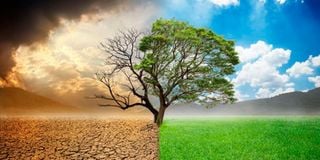How Jehovah’s Witnesses protect the environment

I look forward to a time when the earth will heal from the atrocities humans have committed against it.
Ahead of the sixth United Nations Environment Assembly (UNEA) in Nairobi, many questions remain about the state of the environment and its future prospects. What can nations, communities, organisations and humans generally do to save our planet from total destruction?
In my role as a climate scientist, I am privileged to have additional insights into the subject. The latest scientific assessments indicate that continuing down the path we are on will lead to disastrous consequences for biodiversity, ecosystems, people and the environment. Tipping points in physical systems will be reached and people’s ability to cope severely reduced, especially in vulnerable regions.
As one of Jehovah’s Witnesses, I am privileged to be part of an organisation that puts environmental sustainability at the centre of not only its teachings but also construction projects. Members work and live in harmony with nature, where appropriate, and this is a testament of our hope for a safe, secure and clean earth. For example, our branch office near Chelmsford, in Essex, England, is constructed in an area where several species of wildlife inhabit.
To protect these, volunteer workers used recycled wood to build nests that herded some specific bird species away from the construction zone. Grass snakes, common lizards and limbless lizards called blindworms were moved to safe areas. At night, LED lamps were used to limit the spread of light and avoid disrupting nocturnal species of wildlife.
In Mexico, Jehovah’s Witnesses have received the “Clean Enterprise” certificate for seven years in a row for their dedication to the care and protection of the environment. In Kenya, it is impressive to see a well-thought out evidence-based deviation from the popular use of impervious material (cabro) in the landscaping of our headquarters and the Kingdom Hall on Elgeyo Marakwet Road, both in Nairobi. The office complex has multiple green spaces.
When land surface is covered to the extent that rainwater cannot permeate to replenish the soil moisture and water table, increased runoff is witnessed, and degradation is likely. Landscaping and building with materials that allow water conservation, including allowing water to seep into the soil, lends itself to development of sustainable buildings, estates and cities, crucial in building resilience to climate change and safeguarding the environment. Green spaces likewise promote wellbeing, sustain ecosystems and contribute to carbon sinks.
During the construction of our world headquarters in Warwick, the United States, I found the incorporation of green roofing composed of native flora, as well as the on-site treatment of storm water runoff, impressive. These and other initiatives won the Witnesses Four Green Globes, the highest rating.
It greatly pleases my heart to see efforts being put in place to take care of our beautiful earth the way God intended, and I look forward to a time when the earth will heal from the atrocities humans have committed against it. That time is soon at hand.
- Ms Nying’uro is a climate scientist with the Kenya Meteorological Department.





